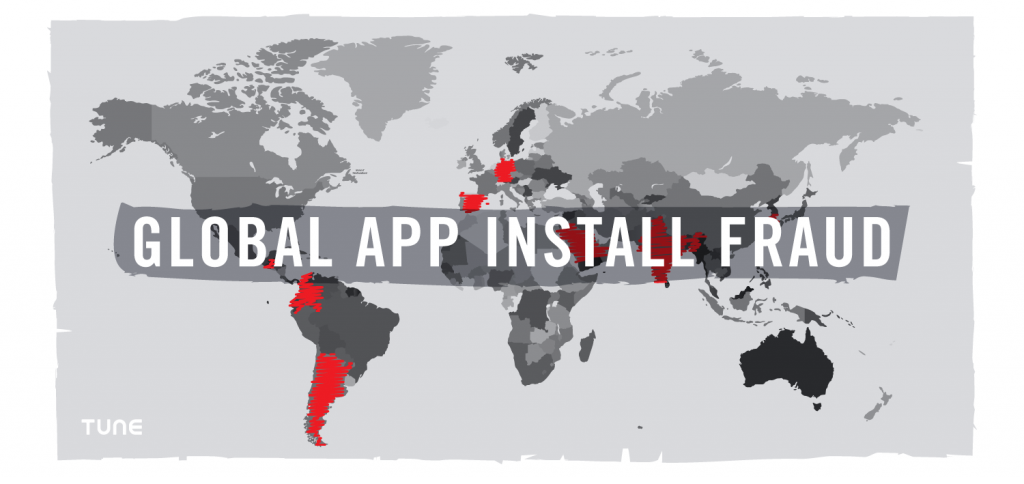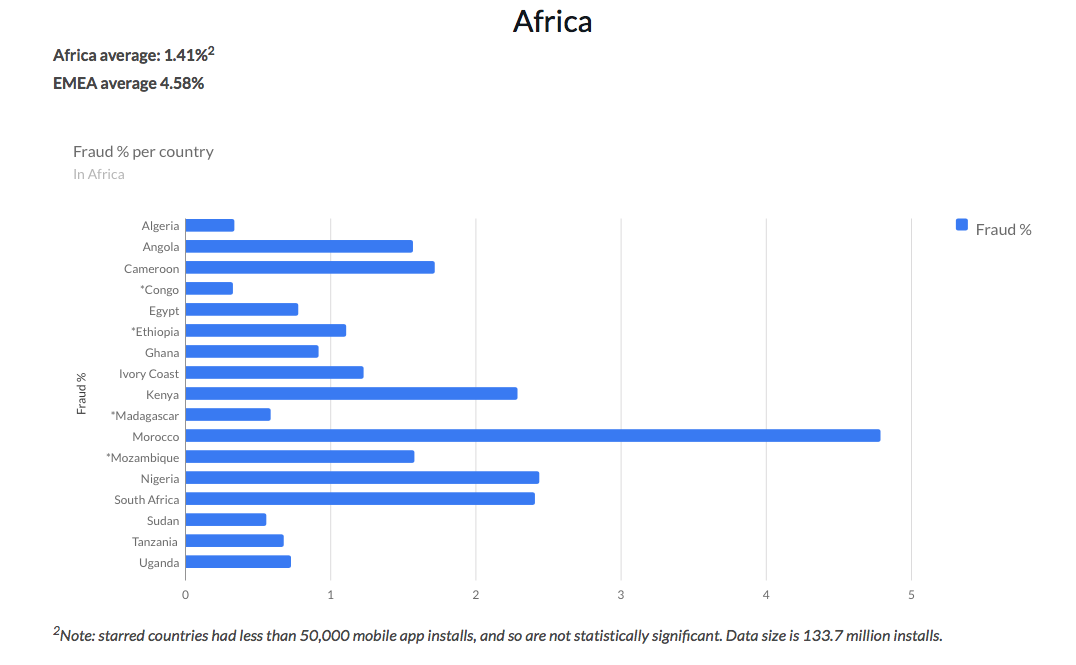
How much global adspend flies out the window right into fraudster’s pockets? Potentially as much as $2 billion dollars a year in app install campaigns alone.
Global app install market size
Mobile marketers spent $5-6 billion dollars on mobile app install campaigns last year in the United States alone. I can’t find any independent analyst’s global estimates of the app install market size for 2017, but historically, the U.S. has accounted for 30-50% of the global app install market. In 2014, for example, it was 40%, and the market has grown quickly in Asia and other parts of the planet since then.
 Given that Yahoo’s mobile analytics division Flurry estimated the global market at $6 billion way back in 2014, the total is certainly north of $10 billion for 2017, and is more likely as high as $15 billion.
Given that Yahoo’s mobile analytics division Flurry estimated the global market at $6 billion way back in 2014, the total is certainly north of $10 billion for 2017, and is more likely as high as $15 billion.
So how much is fraud?
The global cost of app install fraud
TUNE just completed a massive global app install fraud report. The sample size was 627 million installs driven by 705 different ad networks in 249 countries/regions, measured from January 1 to July 31, 2017.
The results are freely available here, by country and region, in what we believe is the most detailed per-country report ever released.
Globally, app install fraud comes out to 7.8%.
We’ve seen 2016 estimates of app install fraud costs ranging from $100 million to $350 million. And we’ve recently seen estimates of just one variety of app install fraud costing advertisers much more: $1.1 to $1.3 billion in this year.
If we just apply the 7.8% fraud number to our estimates to the global app install market, the numbers look huge already: $780 million dollars to $1.17 billion.
But fraudsters don’t target all app install campaigns equally.
Fraud: not evenly spread across the industry
Fraudsters target rich countries and rich apps preferentially.
That means that average numbers are misleading. For example, North America appears to have a fairly low average rate of fraud, because there are many, many small to medium-sized apps with small to medium-sized marketing campaigns.
But we have specific customers with fraud attempt rates in the 30-70% range.
Why?
 They are the wealthiest companies with massive apps (in their vertical) that generate a ton of revenue. Just one example is a category-leading TUNE customer with a significant amount of offline business but whose app is critical to success. Not only is this customer’s app critical to its business, it also operates in an extremely well-funded and competitive category.
They are the wealthiest companies with massive apps (in their vertical) that generate a ton of revenue. Just one example is a category-leading TUNE customer with a significant amount of offline business but whose app is critical to success. Not only is this customer’s app critical to its business, it also operates in an extremely well-funded and competitive category.
As such, the company prioritizes onboarding new customers via mobile, and pays high prices for new users.
About half the time, this company’s app installs turn out to be fraudulent — something marketers wouldn’t learn without TUNE’s fraud prevention tools.
What this means is that multiplying the entire industries’ receipts by the average industry rate of fraud is simplistic. Fraud is higher where there’s more money to be made. The upshot is that our estimates are on the low end, and that total fraud in the app install space is likely to be in the $2 billion range … a significant part of the $16.4 billion that Adloox and The&Partnership estimated digital ad fraud will cost advertisers in 2017.
That’s something that mobile marketers need to be discussing with their ad partners up front, and frequently. And it’s something that’s easier to do with common figures and shared definitions, as enabled by TUNE’s industry-leading fraud prevention solution.
Let this be the beginning:
Author
Before acting as a mobile economist for TUNE, John built the VB Insight research team at VentureBeat and managed teams creating software for partners like Intel and Disney. In addition, he led technical teams, built social sites and mobile apps, and consulted on mobile, social, and IoT. In 2014, he was named to Folio's top 100 of the media industry's "most innovative entrepreneurs and market shaker-uppers." John lives in British Columbia, Canada with his family, where he coaches baseball and hockey, though not at the same time.




